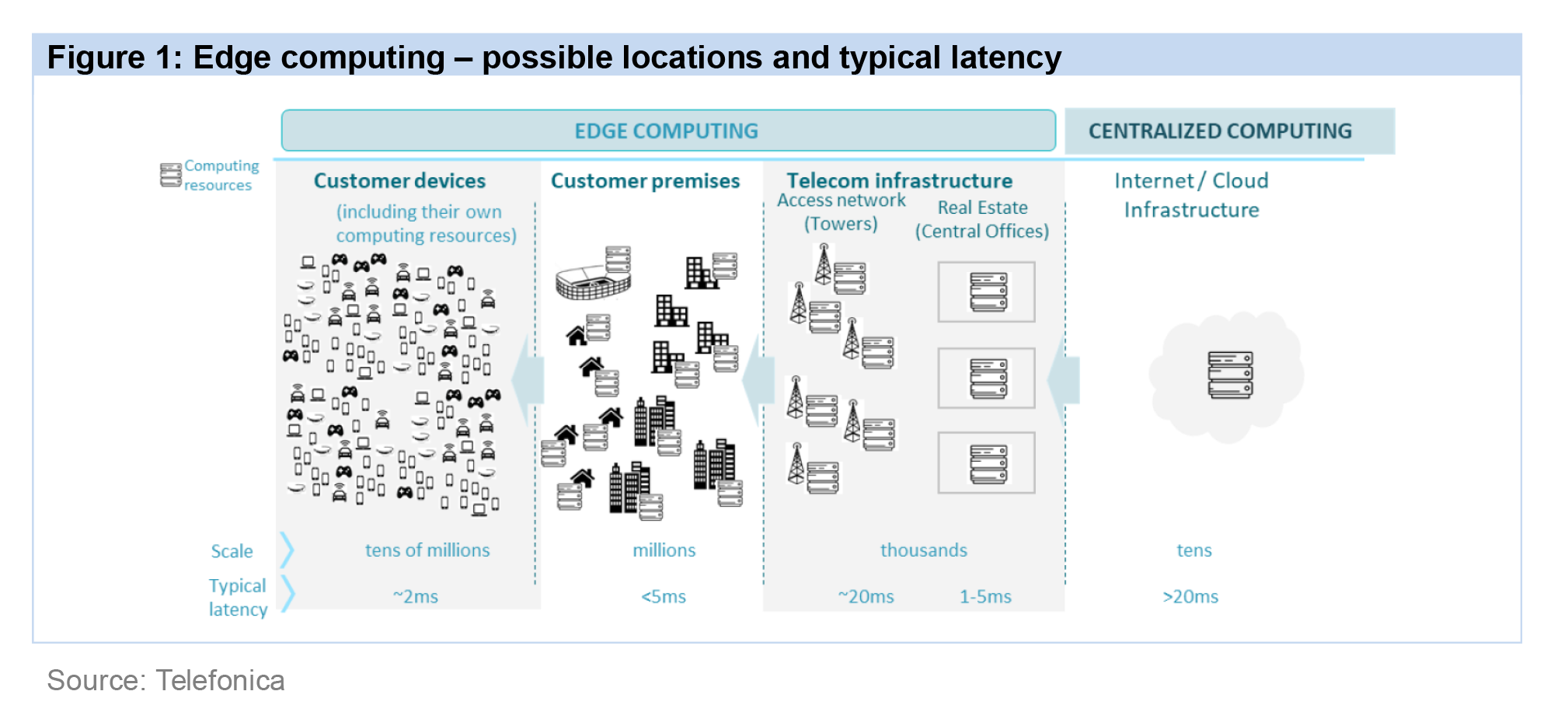Market status
Edge computing progress update
Edge computing can be deployed in wireless or wireline network environments wherever low latency or the localized processing, handling, and management of large volumes of data are critical to the delivery of high-quality services. This can include use cases such as the control and monitoring of industrial machinery and processes (Industry 4.0), connected and autonomous vehicles, augmented and virtual reality (AR/VR), high-quality video, gaming, and a range of services for enterprise and industry verticals. Edge computing can also be used as a platform for hosting third-party applications and services.
5G networks will need edge computing to support a range of low-latency use cases, so 5G will also be the major driver of edge deployments. Similar benefits can apply in 4G networks, but in the case of LTE this means deploying edge-computing capabilities as an add-on, as support for edge is not written into the LTE specifications.
In telco networks, the standardized edge framework defined by ETSI's Multi-access Edge Computing Industry Specification Group (MEC ISG) is expected to have wide support. It provides an open platform that can be implemented regardless of the underlying radio infrastructure, and ETSI suggests that service providers can use this as both a revenue generator and an application test bed without being forced to wait for full ratification of the 5G standards and the associated capital investment. Starting out as a 4G-edge test bed with limited deployments, MEC will then enable a smooth transition to 5G without the need for major upgrades.
ETSI has set out various options for edge computing deployments in LTE networks, suited to various use cases and employing the MEC host at various locations within the network – either bundled into a single platform or incorporating selected core network elements in a distributed evolved packet core (EPC) approach.
Examples of commercial LTE-based edge services are already starting to appear. AlefEdge (formerly Alef Mobitech) has been trialing an edge platform that the company says can be deployed as an overlay on a 4G network. It has also cooperated on what it claims is the first mobile edge platform to be deployed in a live mobile network, with Vodafone Idea and Tech Mahindra.
More than one edge available
The placement of edge computing resources is proving to be a key issue, particularly with regard to 5G. In the enterprise context, the "edge" can refer to the IoT device or a gateway located at the customer premises. In use cases such as VR or autonomous vehicles, low latency can be critical, and the overriding consideration will be one of proximity to the point of service delivery. In such instances, the base station might provide the optimum location.
Use cases where a higher level of latency can be tolerated, but where the demands of local content caching or data processing require more capacity, can potentially be supported further back in the network, such as at a central office or aggregation point (see Figure 1).

Computing and storage capacity is likely to be more constrained the closer to the network edge resources are placed, hence applications that require the caching or processing of large amounts of data at the edge may be better sited at a central office or metro aggregation point, rather than at the base station or on customer premises.
The placement of edge computing resources will also be governed by considerations of cost and complexity, and by practical concerns such as the availability of space relative to compute and storage requirements. Vertiv, a provider of equipment enclosures for base stations, roadside locations, and central offices, says it has identified over 100 potential use cases for edge computing, with up to five different network layers where various form factors could be required.
Where an operator is using existing assets such as base station sites or central offices, these can potentially work as a starting point for edge computing deployments. However, consideration must be given as to how these sites will be used in the longer term as 5G is rolled out. For example, virtualized core network components and associated services may need to be hosted later on the same platforms.
According to HPE, edge network hardware, whether for enterprise or network applications, still needs to be capable of scaling in terms of processing, memory and storage, and withstanding varying environmental conditions. Being hosted anywhere from aggregated cell sites to closets also means the capability to be supported in remote edge locations by non-IT staff will be key.
Localized hardware, such as HPE's Converged Edge Hardware Infrastructure, can provide a common platform for network software such as virtualized radio access networks (vRANs), MEC, packet core, and private LTE, as well as application software such as video and data analytics, artificial intelligence (AI), and machine learning (ML), says the vendor.

